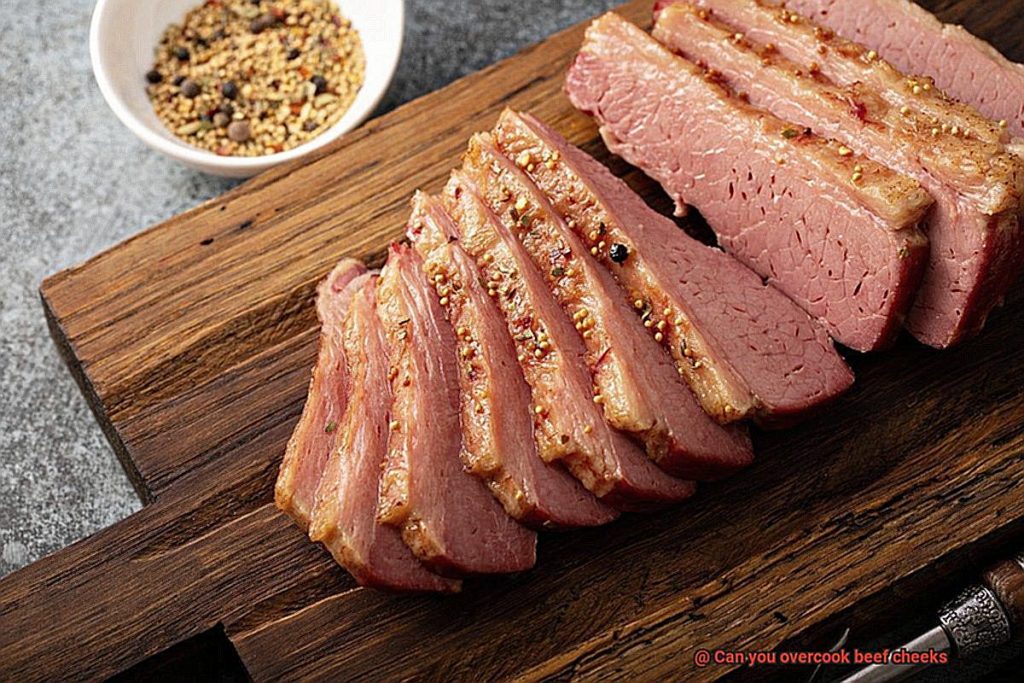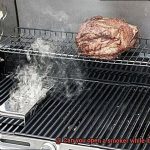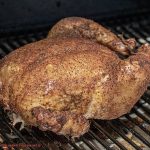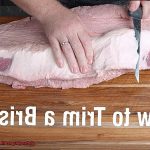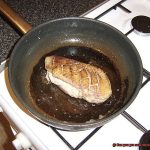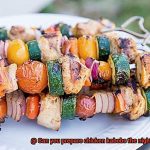Do you want to savor the succulent taste of beef cheeks but afraid of ruining it by overcooking? Worry not, as we have got you covered. Today, we will tackle the age-old question: can you overcook beef cheeks?
Beef cheeks may not be as popular as other cuts of meat, but they are making a comeback in modern cuisine. It’s no surprise why – with its rich and intense flavor and tender texture, beef cheeks are a culinary delight. However, cooking this delicacy can be challenging, especially if you’re new to it.
The key to perfecting your beef cheek dish is finding the sweet spot between tenderness and toughness. Overcooking can turn this delectable cut into an unpleasant chewy mess. But how do we avoid this kitchen nightmare?
In this blog post, we’ll explore different cooking techniques that guarantee perfectly cooked beef cheeks every time. We’ll dive into braising, slow-cooking, and other methods that bring out the best flavor in your meat. Plus, we’ll share tips on ideal cooking times and temperatures to achieve that mouthwatering result.
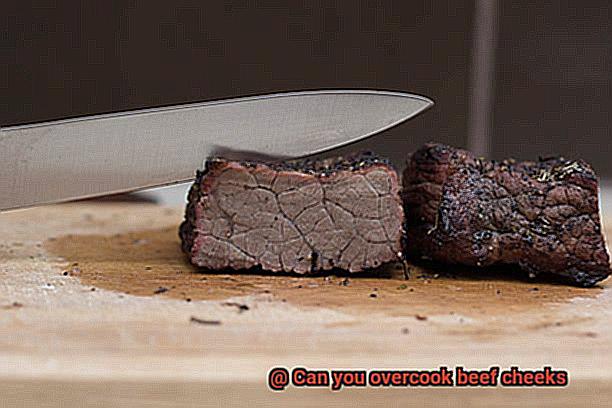
Whether you’re a seasoned cook or just starting with beef cheeks, our guide will give you the confidence to create a sensational dish without worrying about overcooking. So let’s get started.
Contents
What are Beef Cheeks?
Well, beef cheeks are a tough, flavorful cut of meat that come from the facial muscles of a cow. These hard-working muscles give beef cheeks their toughness but also provide them with an incredible depth of flavor.
Due to their tough nature, beef cheeks are often used in slow-cooked dishes such as stews and braises. The collagen found in the meat requires a low and slow cooking process to break down and create a tender, silky texture. When cooked correctly, beef cheeks are incredibly tender and packed with a rich, beefy flavor that will leave your taste buds dancing.
Beef cheeks are also full of collagen, which is a protein that gives them their silky texture. This makes them perfect for dishes like tacos and sandwiches where the meat can be shredded and used as a filling.
Although beef cheeks may not be readily available at your local grocery store in the United States, they can usually be found at specialty butchers or online. When buying beef cheeks, they are often sold boneless and trimmed of excess fat, making them easier to work with.
To cook beef cheeks correctly, it’s important to pay close attention to the cooking time and temperature. Beef cheeks should be cooked low and slow, typically at around 300-325°F for several hours. Adequate liquid should also be added during cooking to keep the meat moist and tender throughout the process.
Can You Overcook Beef Cheeks?
Then, you know that overcooking them is a culinary nightmare. But fear not, for we have the answers to the much-debated question: Can You Overcook Beef Cheeks?
The truth is, it’s possible to overcook beef cheeks, and the outcome depends on how much they are overcooked and the cooking method used. When beef cheeks are overcooked, they become tough and dry, losing their natural tenderness and juiciness. This is especially problematic when grilling or smoking beef cheeks, as high heat and long cooking times can easily lead to overcooking if not closely monitored.
To avoid ruining your beef cheeks, use a meat thermometer to monitor their internal temperature throughout the cooking process. The ideal temperature for beef cheeks ranges from 195-205 degrees Fahrenheit, ensuring that they are cooked through while still maintaining their tenderness and juiciness.
Choosing the right cooking method for beef cheeks is equally important. Slow-cooking methods such as braising or smoking are often recommended for this cut of meat. These methods allow the beef cheeks to cook slowly and evenly without drying out or becoming tough.
What Happens When You Overcook Beef Cheeks?
Attention all foodies. If you’re a fan of beef cheeks, you know that nothing beats a perfectly cooked piece of this delicious meat. However, cooking beef cheeks can be a challenge. Overcook them and you’ll end up with a tough, dry mess that’s anything but enjoyable. So, what happens when you overcook beef cheeks? Let’s explore.
Firstly, overcooked beef cheeks become dry and stringy. This is because the proteins in the meat denature and tighten up, resulting in an unpleasant texture that’s difficult to chew. To avoid this, it’s crucial to cook beef cheeks low and slow to break down the connective tissues and make them tender. However, if they’re cooked for too long or at too high of a temperature, the process can go too far and lead to meat that’s far from tender.
In addition to the unpleasant texture, overcooking can also cause the flavors in beef cheeks to become muted or lost altogether. The heat can break down the complex flavor compounds in the meat, leading to a blander taste. Furthermore, if the meat becomes too dry, it won’t be able to hold onto any flavorful juices or sauces that may be added later.
Overcooked beef cheeks can also pose a safety concern. If the meat is cooked at too low of a temperature for too long, harmful bacteria can grow and cause food poisoning. It is essential to use a meat thermometer to ensure that your beef cheeks reach an internal temperature of at least 160°F (71°C) to kill any bacteria.
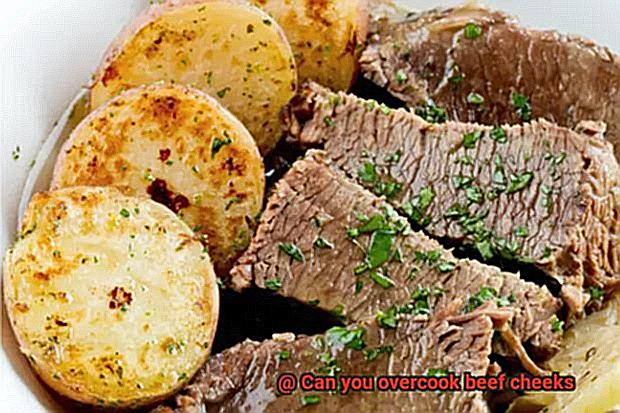
How to Avoid Overcooking Beef Cheeks
Many people struggle with overcooking this delicious cut of meat. But fear not, expert tips are here to save the day.
Choose the Right Method
When it comes to cooking beef cheeks, slow-cooking methods like braising or stewing are your best bet. This allows the meat to cook slowly and evenly, resulting in tender and flavorful beef cheeks. The low heat and long cooking time break down the tough fibers of the meat and create a melt-in-your-mouth texture.
Use a Meat Thermometer
To ensure that you don’t overcook your beef cheeks, invest in a meat thermometer. This will help you monitor the internal temperature of the meat as it cooks and prevent it from becoming dry and tough. The ideal internal temperature for beef cheeks is around 200-205°F (93-96°C). Remember to insert the thermometer into the thickest part of the meat, away from the bone.
Get the Liquid Levels Right
Too much liquid can cause the meat to become waterlogged and tough, while too little liquid can result in dry and overcooked meat. Follow your recipe’s instructions carefully and adjust the liquid levels as needed based on the size and thickness of your beef cheeks. The liquid should cover about two-thirds of the meat, allowing it to braise in its own juices.
Add Some Acid
Adding some acid such as vinegar or wine to the cooking liquid can help to break down the tough fibers of the meat and make it more tender. The acid also adds a tangy flavor that complements the richness of the beef cheeks. You can also add aromatics like onions, garlic, and herbs for extra depth of flavor.
Rest Your Meat
After cooking, allow your beef cheeks to rest for a few minutes before serving. This allows the juices to redistribute throughout the meat, making it more flavorful and tender. Cover the meat loosely with foil to keep it warm and prevent it from drying out. The resting time should be about 10-15 minutes, depending on the size of the meat.
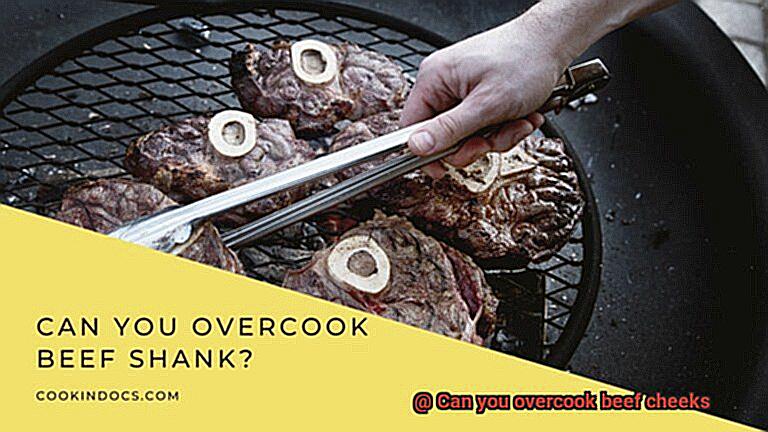
What Temperature Should You Cook Beef Cheeks At?
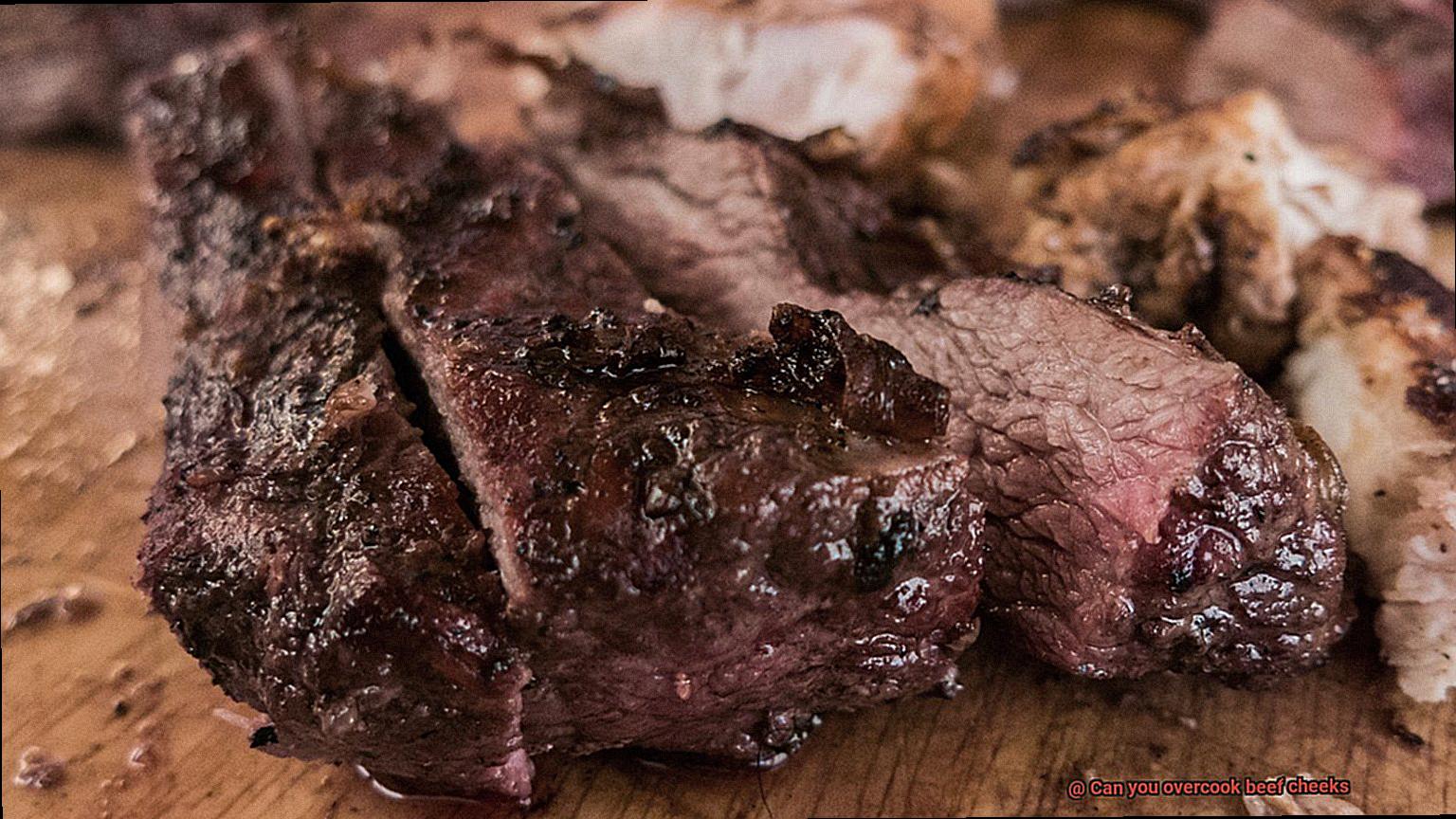
Temperature is the key factor to keep in mind when preparing this tough cut of meat. To achieve the perfect texture and flavor, it is essential to cook beef cheeks slowly at a low temperature.
Experts recommend cooking beef cheeks at a temperature range of 160°F to 180°F. This range ensures that the meat will become tender and juicy, while all the flavors will develop perfectly. However, it’s important to note that different cooking methods require different temperatures.
For those using slow-cooking methods such as braising or stewing, aim for a temperature of 160°F and let it cook for 6-8 hours. This method allows the meat to break down slowly, resulting in tender and flavorful beef cheeks.
If you’re cooking on a stovetop or grill, slightly higher temperatures around 180°F are recommended to ensure even cooking. Cooking at higher temperatures will also help achieve a lovely crust on the outside of the meat.
Although it may be tempting to rush the cooking process by increasing the temperature, doing so can cause the beef cheeks to become tough or dry out. Overcooking beef cheeks can also result in them becoming mushy and losing their flavor. Therefore, it’s crucial to keep an eye on the temperature while cooking and avoid overcooking.
To ensure that your beef cheeks come out perfectly tender and juicy every time, follow these expert tips: slow-cook using braising or stewing methods, use a meat thermometer to monitor internal temperature, get the liquid levels right, add some acid like vinegar or wine to break down tough fibers, and allow the meat to rest for 10-15 minutes after cooking for maximum tenderness.
What Liquid Should I Use to Cook Beef Cheeks?
If you want to elevate your dish to new heights, the liquid you use is just as important as the cooking method.
Let’s explore some exciting options beyond water that can take your beef cheeks from ordinary to extraordinary. First on our list is red wine. This popular choice not only adds a rich and complex flavor but also has tannins that break down tough muscle fibers, resulting in juicy and tender meat.
If you’re feeling daring, try something different like beer or bourbon. These alcoholic beverages can add a unique twist to your traditional beef cheek recipe.
Another option is using broth or stock, which can provide a savory and meaty flavor that complements the beef cheeks perfectly. Beef broth or stock is a classic choice, but don’t be afraid to experiment with chicken or vegetable broth for a lighter touch. Mixing and matching different liquids can also enhance the depth of flavor.
Acidic liquids like tomato sauce, vinegar, or citrus juice may not be the first thing that comes to mind when cooking beef cheeks. However, they can work wonders by breaking down the tough muscle fibers and adding a bright and tangy flavor that will make your taste buds sing.
It’s important to note that using too much liquid can result in overcooked and mushy meat. Use just enough to cover the beef cheeks and monitor the cooking process closely.
Tips for Cooking Perfectly Tender and Juicy Beef Cheeks
Beef cheeks are a cut of meat that requires special attention to ensure they are cooked perfectly. If you’re looking to impress your guests with a tender and juicy dish, these tips will help you achieve just that.
Tip 1: Preparing the beef cheeks properly before cooking is essential.
Trim any excess fat and silver skin from the meat, and marinate it in a flavorful liquid for several hours or overnight. This process helps break down the tough muscle fibers in the meat, resulting in a more tender texture that will melt in your mouth.
Tip 2: Braising the beef cheeks low and slow is another crucial tip for achieving perfectly cooked beef.
Cooking them in a flavorful liquid such as red wine or beef broth over low heat for several hours until fork-tender will infuse the meat with flavor and keep it moist during cooking. This process allows the meat to become tender without losing its juiciness.
Tip 3: Using a meat thermometer to check the internal temperature of the beef cheeks is another essential tip.
The ideal temperature for beef cheeks is around 180 degrees Fahrenheit, which ensures that the meat is fully cooked but still maintains its tenderness.
Tip 4: The right amount of liquid is also important when cooking beef cheeks.
You don’t want too much liquid as it can dilute the flavors, but you also don’t want too little as it can lead to dry meat. A good rule of thumb is to use enough liquid to cover about two-thirds of the meat.
Tip 5: Choosing the right cooking vessel is also crucial when preparing beef cheeks.
A heavy-bottomed pot or Dutch oven is ideal as it distributes heat evenly and retains heat well. This allows for a consistent temperature during cooking, which is essential for achieving perfectly cooked meat.
KgY5Owb-MTc” >
Conclusion
In the world of meat cuts, beef cheeks may not be the most popular choice, but they are undoubtedly one of the most flavorful and tender. With their rich and intense taste, beef cheeks have become a beloved ingredient in modern cuisine. However, cooking them to perfection can be challenging, especially for novice cooks.
Overcooking beef cheeks is a culinary sin that can turn this delicious cut into an unpleasant chewy mess. To avoid this catastrophe, it’s essential to choose the right cooking method such as braising or slow-cooking methods like stewing. This allows the meat to cook slowly and absorb all the flavors from the liquid it’s cooked in.
To ensure your beef cheeks are cooked through while still maintaining their tenderness and juiciness, use a meat thermometer to monitor their internal temperature throughout the cooking process. This way, you can be sure that your dish is cooked to perfection without risking overcooking.
By following these expert tips on ideal cooking times, temperatures, liquid levels, and choosing the right cooking vessel, you’ll have all the confidence you need to create a sensational dish without any fear of ruining it by overcooking your beef cheeks.

